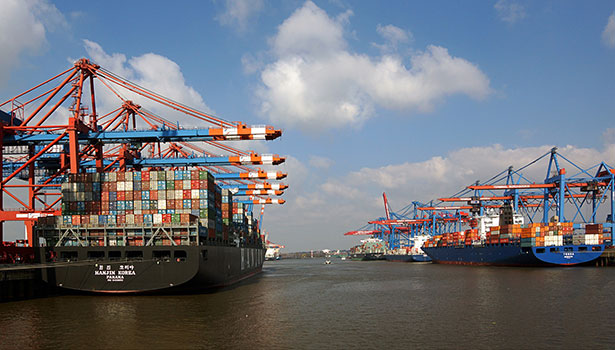Concise Guide to Container Ship Design (Part I)

Container Ship Design
Container ships form an important cornerstone of modern maritime traffic. Historically, cargo ships were designed to ferry cargo in bulk, but even in the most rudimentary examples of these vessels, unit cargo was stowed in wooden containers or boxes. As wider types of cargo became increasingly prevalent, container solutions were tailored to move fragile cargo, more compact goods, and items that required special handling. The first container ships were designed to be loaded with these new storage units, and also had to ensure that the contents thereof remained undisturbed so it could reach its destination in good order.
Over the course of this article and the next, we will take a look at the design of these fascinating vessels. To start with, we’ll give you a concise overview of container ship design and construction, and then zero in on hull geometry to start.
Design & Construction: An Overview
Historically, cargo ships were designed to ferry cargo in bulk, but even in the most rudimentary examples of these vessels, unit cargo was stowed in wooden containers or boxes. As wider types of cargo became increasingly prevalent, container solutions were tailored to move fragile cargo, more compact goods and items that required special handling. The first container ships were designed to be loaded with these new storage units, and also had to ensure that the contents thereof remained undisturbed.
As with most areas of design, in shipping form follows function. The design of a container ship is dictated by the following factors:
- The type of cargo it carries
- The ports it will encounter on route
- The functionality of the ship
- Economic trends in the market
Container ships are categorised in one of a few ways, including: overall sizing; based on tonnage, beam, depth of length; mode of handling; or range of service.
Container Ship Hull Geometry
When compared to vessels like bulk carriers and oil tankers, container ships have a noticeably finer hull, i.e. the forward and act sections are streamlined rather than full. The cargo carried by these ships are mostly high priority and often of a high value. As such, these are tightly time-bound vessels. Turnaround times leave little room for error. Upload and unloading times have to be as streamlined as possible, so they can reach the next port without any delays in departure. As such, container ships are high-speed vessels, which requires minimal hull resistance – therefore the finer form. These hulls also have low-coefficient buoyancy that ranges from 0.6 – 0.7. Additionally, the hull section for the larger part of the ship’s length is almost rectangular. This provides the maximum amount of space for below-deck containers.
In our next article, we will discuss the midsection design and torsion box in double-hulled container ships. We’ll also take a look at the stowage of containers.
This entry was posted under Maritime Facts and Stories












Leave a Reply